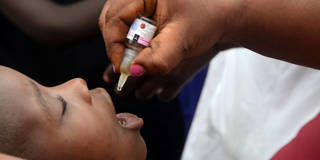Even though the Democratic Republic of Congo, Nigeria, Somalia, and Yemen had previously eradicated wild polio, they have, in recent years, experienced outbreaks caused by a version of the virus derived from vaccines. But after beating polio once, they can do it again.
SEATTLE – Eradicating polio has taken far longer than anyone expected. But the last 35 years of efforts to immunize every child against polio represent a major win for global health: a 99% reduction in cases means that nearly 20 million people are walking today who otherwise would have been paralyzed.
Now we must finish the job and achieve a polio-free world. That is why, in addition to combating wild polio in Afghanistan and Pakistan, the Global Polio Eradication Initiative (GPEI) is focusing on the places where children are most likely to encounter and spread variant poliovirus – particularly the more prominent type 2. This includes northwestern Nigeria, southeastern Democratic Republic of the Congo (DRC), northern Yemen, and southern Somalia, which have accounted for more than 84% of these cases globally since January 2022.
Insecurity, weak infrastructure, and challenging terrain make it difficult to provide children in these areas with the most basic health services, let alone vaccines. This type of “under-immunized” environment is especially conducive to outbreaks of variant polio, which can occur when the live, weakened virus contained in the oral polio vaccine is allowed to circulate around unvaccinated or under-vaccinated communities. Tragically, the virus can regain its strength over time and paralyze children.

SEATTLE – Eradicating polio has taken far longer than anyone expected. But the last 35 years of efforts to immunize every child against polio represent a major win for global health: a 99% reduction in cases means that nearly 20 million people are walking today who otherwise would have been paralyzed.
Now we must finish the job and achieve a polio-free world. That is why, in addition to combating wild polio in Afghanistan and Pakistan, the Global Polio Eradication Initiative (GPEI) is focusing on the places where children are most likely to encounter and spread variant poliovirus – particularly the more prominent type 2. This includes northwestern Nigeria, southeastern Democratic Republic of the Congo (DRC), northern Yemen, and southern Somalia, which have accounted for more than 84% of these cases globally since January 2022.
Insecurity, weak infrastructure, and challenging terrain make it difficult to provide children in these areas with the most basic health services, let alone vaccines. This type of “under-immunized” environment is especially conducive to outbreaks of variant polio, which can occur when the live, weakened virus contained in the oral polio vaccine is allowed to circulate around unvaccinated or under-vaccinated communities. Tragically, the virus can regain its strength over time and paralyze children.